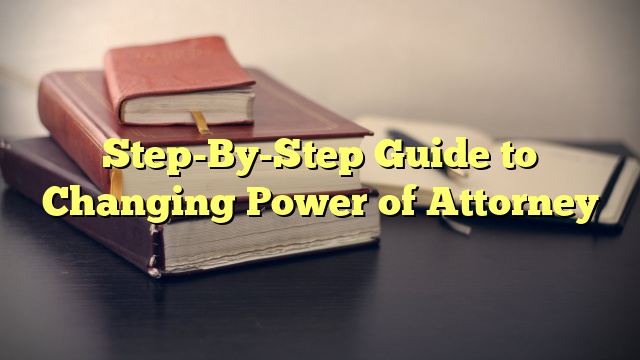Table of Contents
- What is a Power of Attorney?
- Why Should I Change My Power of Attorney?
- Revoking a Power of Attorney
- An Alternative to Revoking a Power of Attorney
- Creating a New Power of Attorney
- Conclusion
What is a Power of Attorney?
A power of attorney (POA) is a legal document that allows a person (the “principal”) to give authority to another person (the “attorney-in-fact” or “agent”) to act on their behalf and in their best interest. The principal can give their agent authority to do as much or as little as they want. This can include anything from signing checks and paying bills to making health care decisions.
Why Should I Change My Power of Attorney?
There are many reasons why you might want to change your power of attorney. Maybe you have given someone too much power and you want to limit their authority, or maybe you need to appoint someone who is more qualified to take on the role. Maybe you have changed your mind about who you want to be your agent, or maybe your current agent has died or is otherwise unavailable. Whatever the reason, it is important to remember that you can change your power of attorney whenever you want.
Revoking a Power of Attorney
To revoke a power of attorney, you must fill out and sign a revocation form that states that you are canceling your previous power of attorney. You should then make sure that all copies of the power of attorney document are destroyed. You should also notify anyone who was relying on your power of attorney, such as a bank or healthcare provider. Finally, you should file the revocation form with the court.
An Alternative to Revoking a Power of Attorney
Rather than revoking your power of attorney, you can simply create a new one. This will enable you to appoint a new agent without having to go through the process of revoking the old one. This can be especially useful if you want to appoint a new agent to act alongside your current one. It is important to note that you cannot revoke a power of attorney without filling out the revocation form and notifying the appropriate parties.
Creating a New Power of Attorney
To create a new power of attorney, you will need to fill out and sign a new power of attorney form. This form will outline your instructions for your agent and will define the agent’s authority. You should also make sure that your new power of attorney revokes your old one. Once you have filled out and signed the form, you should file it with the court and make sure that your agent is aware of it.
Conclusion
Changing your power of attorney is not a difficult process, but it is important to make sure that you understand what you are doing. Make sure to carefully consider who you want to appoint as your agent, and make sure that they are aware of their responsibilities. If you have any questions or need help with the process, it is a good idea to consult a lawyer for advice.


Great guide for understanding the process of changing Power of Attorney. Highly recommend for anyone looking for a step-by-step approach.
A clear and helpful guide on changing power of attorney.
This is a helpful guide for those looking to appoint a new power of attorney. It’s especially important to ensure all steps of the process are completed correctly. Additionally, appointing a trusted attorney-in-fact can help ensure all paperwork is properly filed.
This guide is a great resource for understanding how to change a power of attorney!